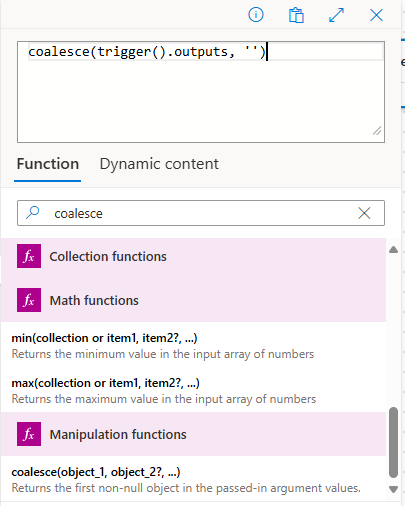Getting errors with null fields
This article provides information to help you handle flow runtime errors and unexpected behaviors related to null fields.
Applies to: Power Automate
Original KB number: 4535432
Symptoms
When you create a flow in Power Automate, you might experience the following issues:
Unexpected behaviors occur when performing an action with a null field.
Runtime errors occur if you don't handle null fields correctly. For example:
InvalidTemplate. Unable to process template language expressions. The provided value is of type 'Null'.

Cause
- If an action receives a null field as input when it expects a different value, it can result in incorrect behavior.
- If an expression expects its parameter to be a string, an object, or an array but instead receives a null response, it can result in a runtime error.
Resolution 1: Add a condition check
To check for a null response, you can add a condition to the flow by following these steps. Then you can appropriate action to handle the condition.
In the Power Automate flow, add a new Condition action.
Choose the dynamic content output that you want to check. For example, User email.
Set the operation to is not equal to.

In the value field, add the expression value as null.


Resolution 2: Use the coalesce function
You can also use the coalesce function to provide default values when a value is null. For example, using coalesce(trigger().outputs, '') will default to an empty string when trigger().outputs is null.

Note
If you still get a runtime error after using the coalesce function, it might be caused by referencing null properties in an object. You can use the question mark operator (?) to handle null outputs from a trigger. For example:
@coalesce(trigger().outputs?.body?.<someProperty>, '<property-default-value>').